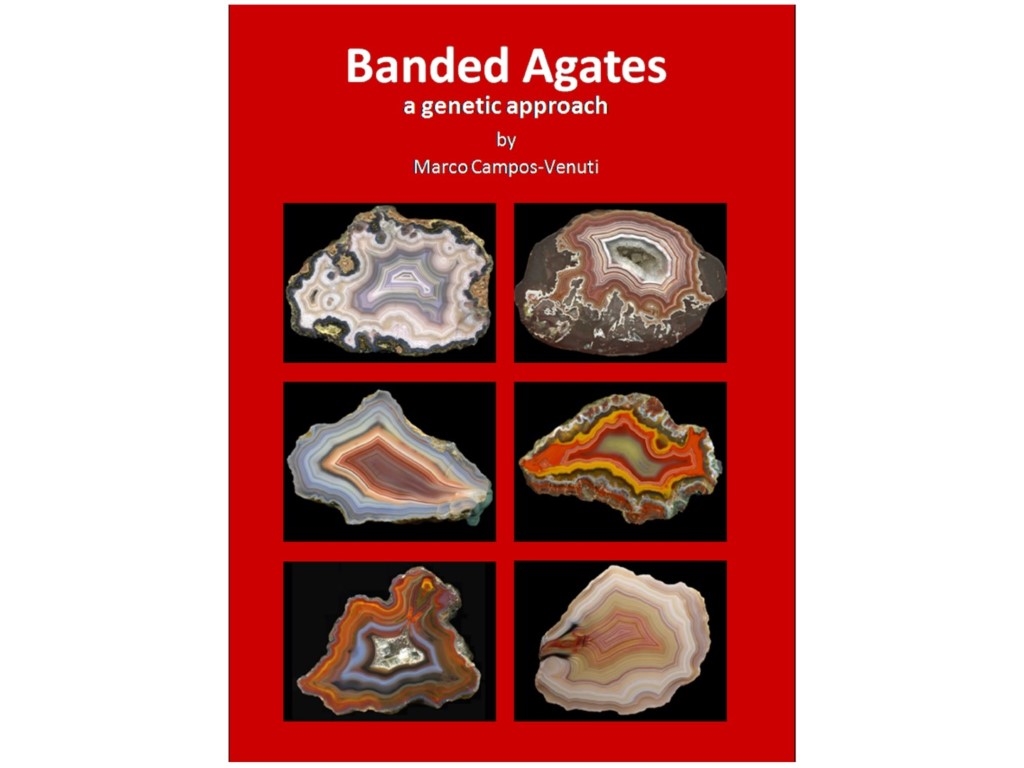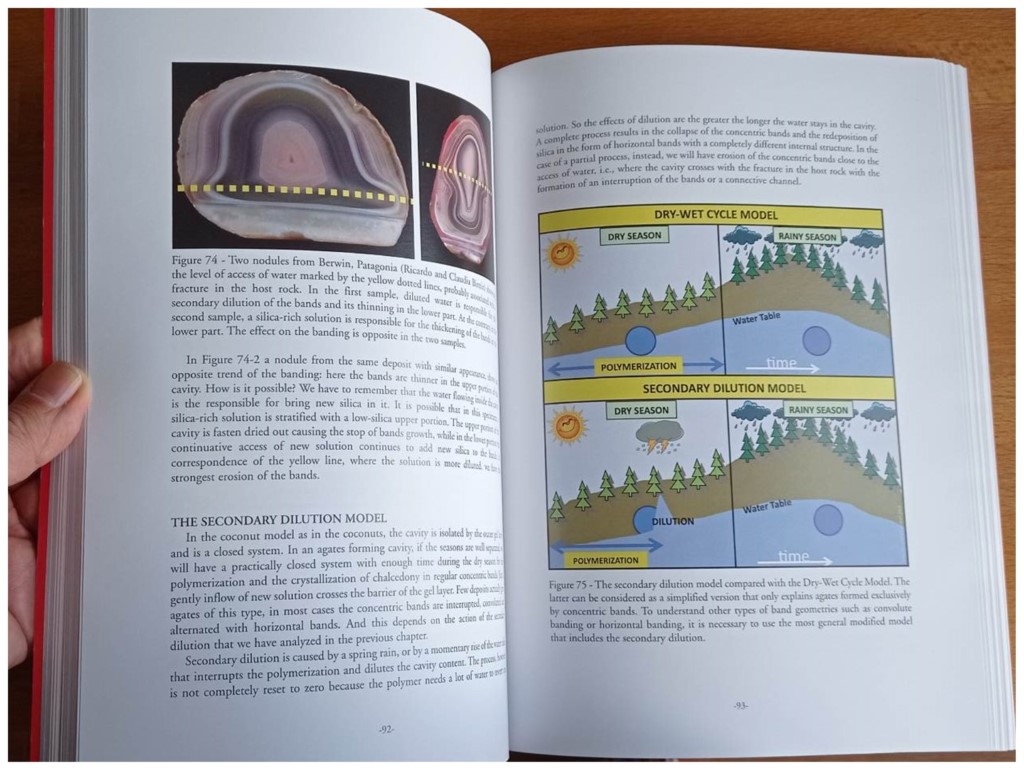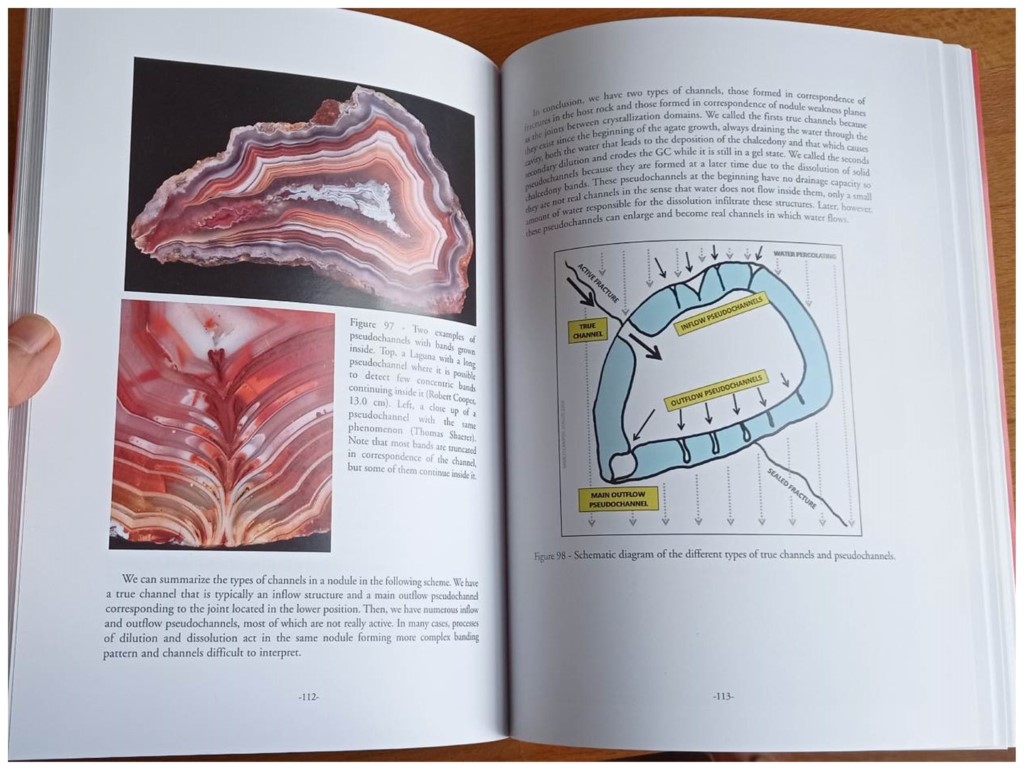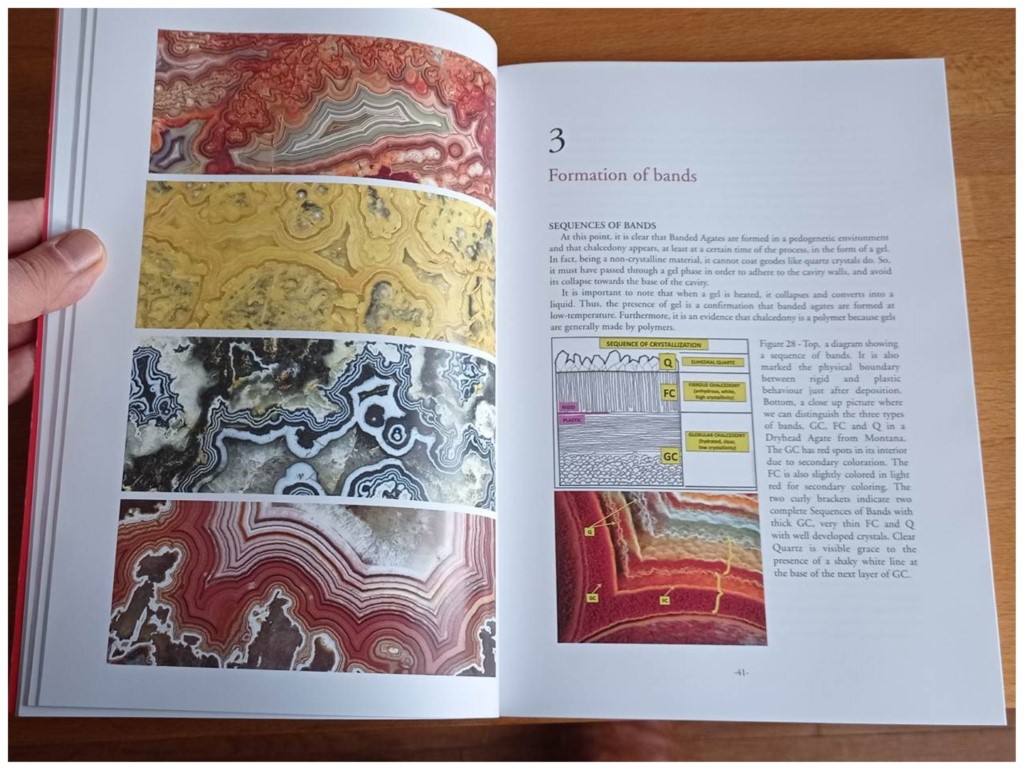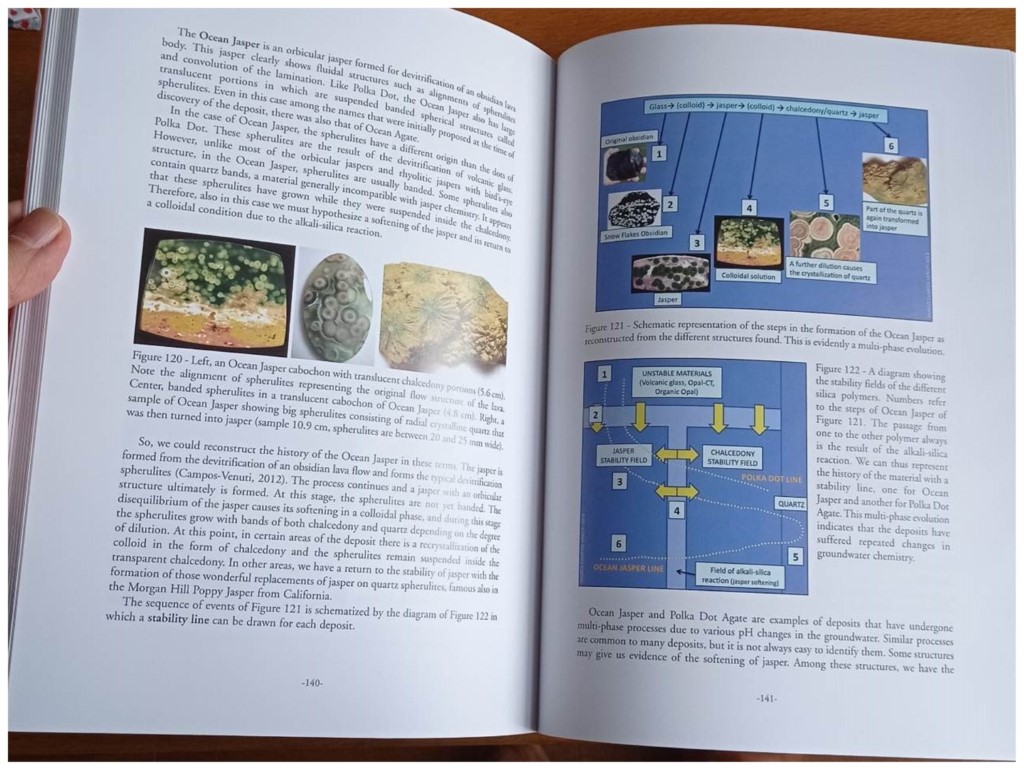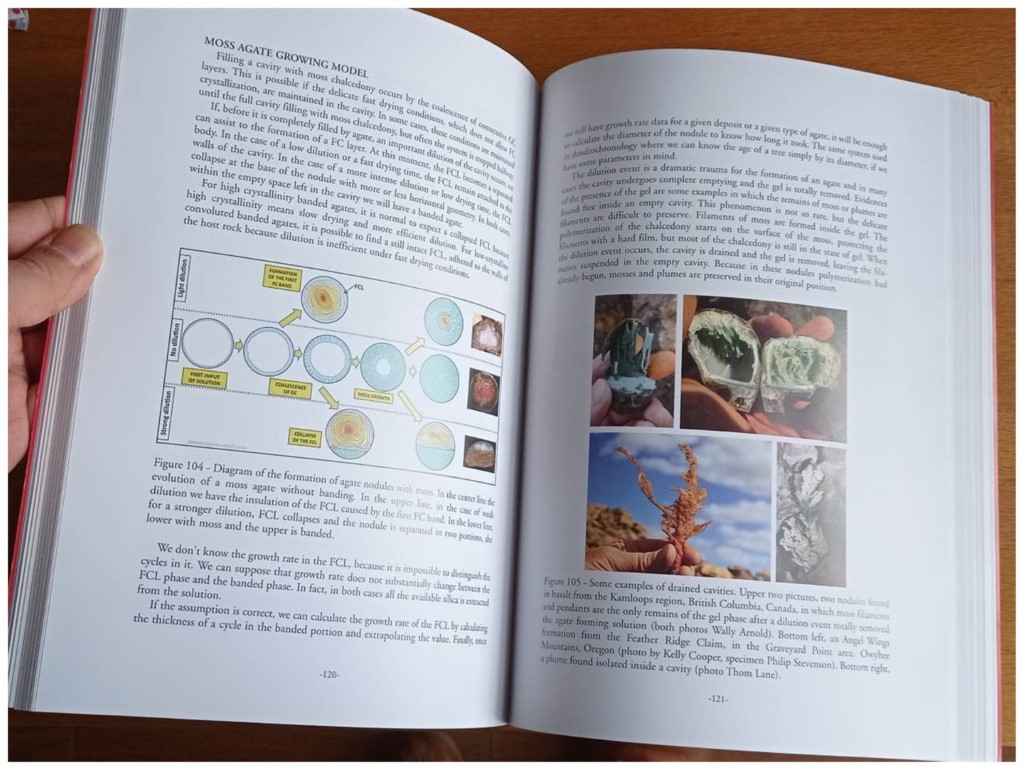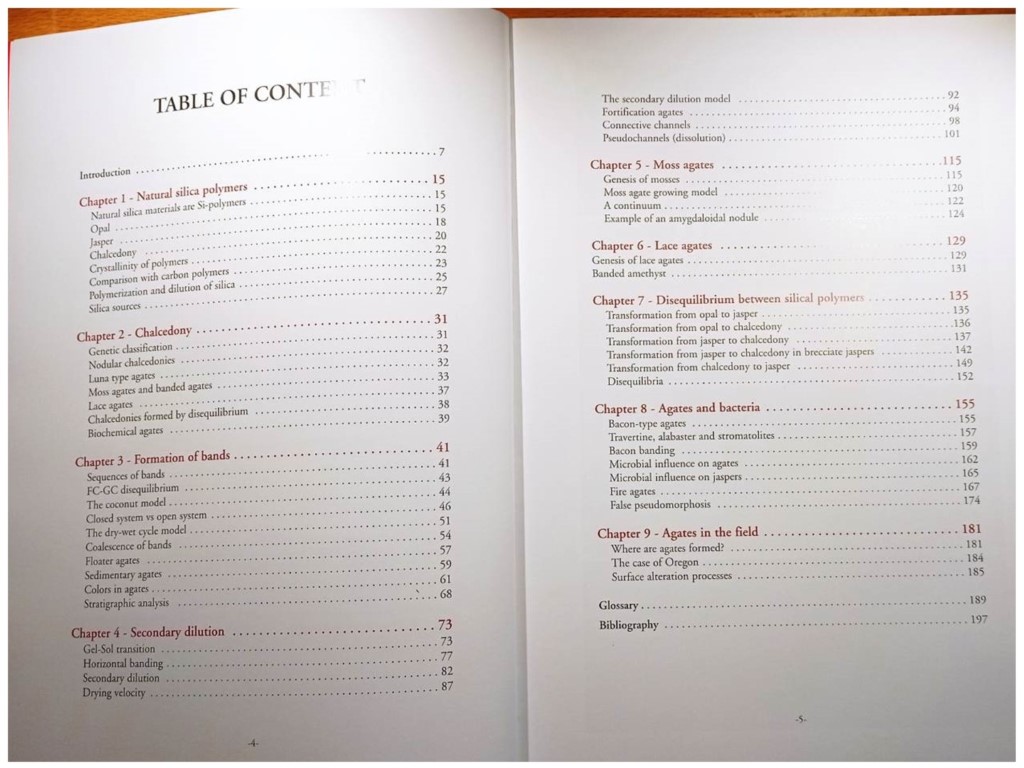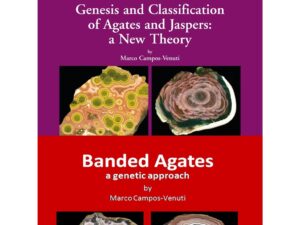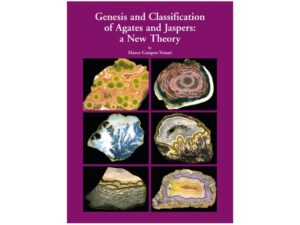The physics of silica polymers helps us to delve into one of the most fascinating phenomena in the mineral world, that of banded agates. The infinity of forms that these structures take have always stimulated the curiosity of scientists and the imagination of collectors. Unlike in hydrothermal systems where the crystals pass from solution to solid permanently, in colloidal systems there is an intermediate gel/sol phase before the hardening of the bands. In this phase the newly formed band repeatedly undergoes phases of dissolution. Thus the final shape depends on the alternation of polymerization which adds silica to the band and dissolution which corrodes the newly formed band.
This book highlights the complexity of the formation of banded agates and the wide variety of different banding systems, mainly depending on the local weather. A model for the genesis of banded agates is proposed explaining the basic concentric banding and all the variation as horizontal and convolute banding. Numerous mechanisms of disequilibrium acting after crystallization between the three main silica polymers are also analysed. The polymers of opal, jasper and agate have the property of returning viscous by absorption of water, giving a huge spectrum of structures.
Chemical processes at the base of Chalcedony deposition are described with simple words and associated to the structures commonly found in natural collectable stones.
The book includes many different diagrams showing the formation of the most important structures found in banded agates, as connective channels and stalactites. The interaction with microbial fauna has been proposed for explain a wide group of agate and many characteristic structures.
Banded Agates: a genetic approach
35,00 €
+ Shipping- Author: Marco Campos-Venuti
- Language: english
- A4 format
- 789 grams
- 200 pages, +400 figures and 48 diagrams
- Shipping with DHL
Agates have been loved since the dawn of the human kind but the dynamic of their genesis has not yet been revealed by researchers. This book highlights the complexity of the formation of banded agates and explain the genesis of the wide variety of different banding systems.
Availability: 193 in stock
